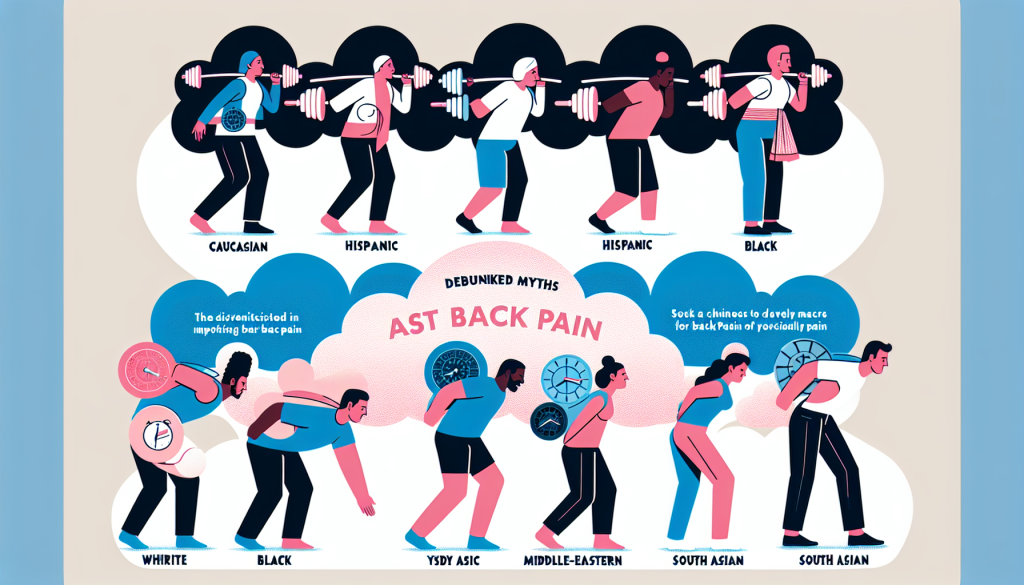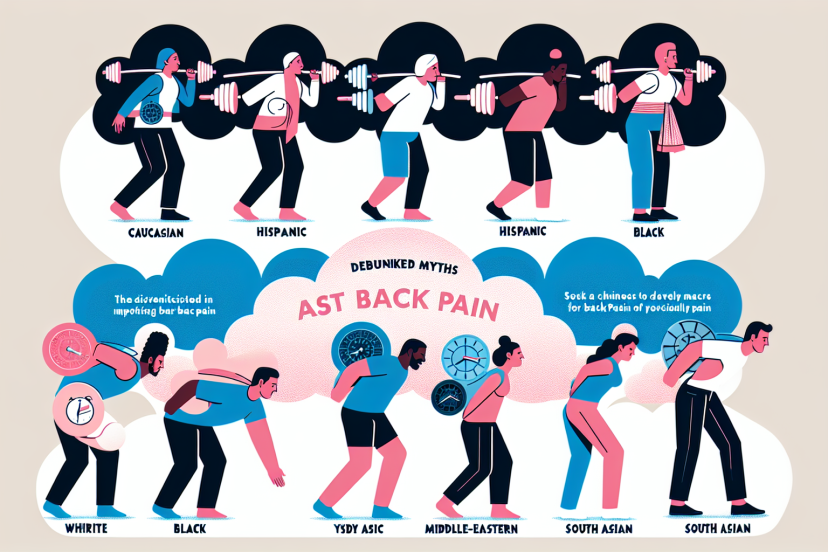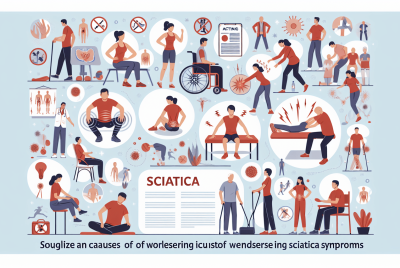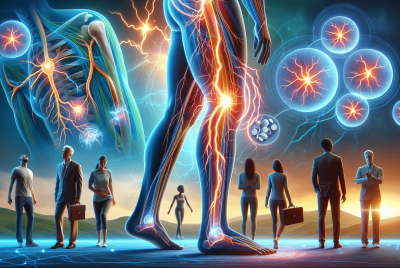10 Common Myths About Back Pain Debunked
10 Common Myths About Back Pain Debunked
Hey there! If you’ve ever experienced back pain (and let’s face it, who hasn’t?), then you’ve likely come across a ton of advice and rumors about what causes it and how to treat it. Well, it’s time to put those myths to rest! In this article, we’re going to debunk 10 common misconceptions about back pain that you may have heard. So, grab a cup of tea, get cozy, and let’s set the record straight on these back pain myths!
10 Common Myths About Back Pain Debunked
Myth 1: Bed rest is the best treatment for back pain
The detrimental effects of prolonged bed rest
Contrary to popular belief, bed rest is not the best treatment for back pain. In fact, prolonged bed rest can have detrimental effects on your condition. When you rest for an extended period, the muscles in your back can weaken and become stiff, leading to even more pain and discomfort. Additionally, lying in bed for long periods can contribute to weight gain, which can also worsen your back pain.
Importance of staying active during back pain
Instead of bed rest, it is important to stay active when you are experiencing back pain. Gentle exercises and movements can help improve muscle strength and flexibility, leading to a faster recovery. Regular physical activity also promotes blood circulation, which aids in the healing process. It is important to listen to your body and avoid high-impact activities, but staying active is crucial for effectively managing back pain.
Effective treatments for back pain
While staying active is crucial, there are also other effective treatments for back pain. These include physical therapy, chiropractic care, and massage therapy, among others. Physical therapy can help strengthen your back muscles and improve your posture, while chiropractic care can align your spine and alleviate pain. Massage therapy can also provide relief by reducing muscle tension and promoting relaxation. It is important to consult with a healthcare professional to determine which treatment option is best for you.
Myth 2: Only old people experience back pain
Back pain can affect people of all ages
Back pain is not exclusive to old age; it can affect people of all ages. While age-related degeneration of the spine is a common cause of back pain in older adults, younger individuals can also experience back pain due to various reasons. Poor posture, sedentary lifestyle, improper lifting techniques, and sports injuries are just a few examples of factors that can contribute to back pain in younger individuals.
Common causes of back pain in younger individuals
The causes of back pain in younger individuals often differ from those in older adults. In addition to age-related degeneration, younger people may experience back pain due to muscle strains, herniated discs, spinal misalignment, and even stress. It is important to identify the underlying cause of your back pain in order to determine the most appropriate treatment.
Preventive measures for back pain
Regardless of age, there are several preventive measures that can help reduce the risk of developing back pain. Maintaining a healthy weight, practicing good posture, staying active, and using proper lifting techniques are all important habits to adopt. It is also crucial to take breaks and avoid prolonged sitting or standing, as these can strain your back muscles. By incorporating these preventive measures into your lifestyle, you can minimize the likelihood of experiencing back pain.

Myth 3: Exercise is harmful for back pain
Benefits of exercise for back pain management
Contrary to the belief that exercise is harmful for back pain, it actually plays a crucial role in its management. Regular exercise can strengthen the muscles in your back, providing better support to your spine and reducing the risk of injury. Exercise also helps release endorphins, which are natural pain relievers, improving your overall well-being. Additionally, staying physically active can help improve your posture and flexibility, further alleviating back pain.
Types of exercises recommended for back pain
When it comes to choosing exercises for back pain, it is important to focus on low-impact activities that do not put excessive strain on your back. Walking, swimming, and cycling are excellent options as they provide cardiovascular benefits without placing too much stress on your spine. Yoga and Pilates are also beneficial for strengthening the core muscles, which play a crucial role in supporting the back. It is important to start slowly and gradually increase the intensity and duration of your exercises to avoid exacerbating your pain.
Precautions to take while exercising with back pain
While exercise is beneficial for back pain management, it is important to take certain precautions to prevent further injury. Always warm up before exercising, as this helps prepare your muscles for activity and reduces the risk of strains. Avoid high-impact exercises that involve twisting or sudden movements, as these can strain your back. It is also important to listen to your body and stop exercising if you experience sharp or worsening pain. Consulting with a healthcare professional or a qualified personal trainer can help guide you in choosing the right exercises and techniques for your condition.
Myth 4: Back pain is always caused by a serious medical condition
Understanding the common causes of back pain
While back pain can be caused by serious medical conditions, it is important to note that it is not always the case. In fact, most cases of back pain are due to muscle strains, sprains, or injuries. Poor posture, sedentary lifestyle, and overuse of the muscles can also contribute to back pain. Understanding the common causes can help alleviate unnecessary worry and provide reassurance that your back pain may not be indicative of a serious underlying condition.
Differentiating between serious and non-serious back pain
Differentiating between serious and non-serious back pain can be challenging, as symptoms can overlap. However, there are some signs that may indicate a more serious underlying condition, such as persistent pain that does not improve with rest, unexplained weight loss, weakness or numbness in the legs, and bowel or bladder dysfunction. If you experience any of these symptoms, it is important to seek medical attention promptly. Otherwise, most cases of back pain can be managed with conservative measures and do not require immediate medical intervention.
When to seek medical attention
While most cases of back pain can be managed at home, there are certain situations in which you should seek medical attention. If your back pain is severe, accompanied by other concerning symptoms, or if it persists for more than a few weeks despite conservative measures, it is important to consult with a healthcare professional. They can conduct a thorough evaluation, order any necessary tests, and provide appropriate treatment or referral to a specialist if needed.

Myth 5: Surgery is the only solution for back pain
Non-surgical treatment options for back pain
Surgery is often seen as the last resort for back pain, and rightfully so. In most cases, non-surgical treatment options are preferred and can provide significant relief. These options include physical therapy, chiropractic care, medication management, and alternative therapies such as acupuncture or massage therapy. Non-invasive procedures such as epidural steroid injections or radiofrequency ablation may also be considered for targeted pain relief. It is important to explore these non-surgical options before considering surgery, as they can often provide effective and less invasive solutions.
Indications for back surgery
While non-surgical treatment options are usually the first line of management for back pain, there are specific cases in which surgery may be indicated. These include severe spinal deformities, progressive neurological deficits, and persistent pain that does not respond to conservative measures. In these situations, surgery may be necessary to correct the underlying problem and provide long-term pain relief. It is important to discuss the potential risks, benefits, and expected outcomes with a qualified surgeon before making a decision about surgery.
Risks and benefits of back surgery
Like any surgical procedure, back surgery carries certain risks and benefits that need to be carefully considered. The benefits of surgery include relief from debilitating pain, improvement in function and mobility, and correction of structural abnormalities. However, surgery also poses risks such as infection, bleeding, nerve damage, and the possibility of the surgery not providing the desired outcome. It is important to have a thorough discussion with your surgeon and to weigh the potential risks and benefits before making a decision about surgery.
Myth 6: Back pain is a result of poor posture
The role of posture in back pain
While poor posture can contribute to back pain, it is not the sole cause. Maintaining a good posture is important as it helps distribute the forces exerted on your spine more evenly, reducing stress on the supporting structures. However, other factors such as muscle imbalances, improper lifting techniques, and sedentary lifestyles can also contribute to back pain. It is important to address these factors along with posture to effectively manage and prevent back pain.
Multiple factors contributing to back pain
Back pain is a multifactorial condition, meaning it can be influenced by various factors. Poor posture, muscle imbalances, obesity, smoking, and stress are just a few examples of factors that can contribute to back pain. These factors can interact with one another, creating a complex interplay that leads to pain and discomfort. Taking a comprehensive approach that addresses all of these factors is important for effective long-term management of back pain.
Ergonomic principles for maintaining a healthy back
Applying ergonomic principles in your daily activities can help maintain a healthy back and prevent pain. This includes maintaining proper posture when sitting, standing, and lifting. Using ergonomically designed furniture and equipment, such as supportive chairs and adjustable desks, can also help reduce stress on your back. Additionally, taking regular breaks and incorporating stretching exercises throughout the day can help improve flexibility and relieve muscle tension. By implementing these ergonomic principles, you can create a healthier environment for your back and reduce the risk of developing pain.
Myth 7: Tight hamstrings cause back pain
Understanding the connection between hamstrings and back pain
While tight hamstrings are often blamed for back pain, the relationship between the two is not as straightforward as commonly believed. Tight hamstrings can contribute to altered biomechanics and muscle imbalances, which may indirectly lead to back pain. However, it is important to note that back pain can have multiple causes, and addressing tight hamstrings alone may not resolve the issue. Employing a comprehensive approach that includes stretching exercises, strengthening the core and back muscles, and improving overall posture is crucial for effectively managing back pain.
Other factors that contribute to back pain
Back pain can be influenced by a variety of factors, some of which were discussed earlier. Poor posture, muscle imbalances, sedentary lifestyle, and improper lifting techniques are just a few examples of factors that can contribute to back pain. Therefore, it is important to consider all of these factors and address them collectively for optimal management of back pain.
Stretching exercises for relieving tight hamstrings
While tight hamstrings may not be the sole cause of back pain, stretching exercises can still provide relief and improve flexibility. Gentle hamstring stretches, such as standing or seated forward bends, can help lengthen the muscles and reduce tension. It is important to start slowly and gradually increase the intensity and duration of the stretches over time. Incorporating regular stretching exercises into your routine can help prevent muscle imbalances and alleviate tightness that may contribute to back pain.
Myth 8: Heavy lifting always leads to back pain
The mechanics of lifting and its impact on the back
While heavy lifting can increase the risk of back pain, it does not always lead to pain. The way you lift and the techniques you employ play a crucial role in preventing injuries. When lifting, it is important to engage your core muscles, bend your knees, and use your leg muscles instead of straining your back. Keeping the load close to your body and avoiding twisting or sudden movements can also help reduce the strain on your back. By employing proper lifting techniques, you can minimize the risk of back pain while lifting heavy objects.
Proper techniques for safe lifting
To ensure safe lifting and minimize the risk of back pain, it is important to follow proper techniques. These include:
- Plan your lift: Assess the weight and size of the object before attempting to lift it. Determine if you need assistance or any special equipment.
- Warm up: Before lifting, take a few minutes to stretch and mobilize your body. This can help prepare your muscles for the task ahead.
- Bend your knees: To lift, squat down by bending your knees and keeping your back straight. Engage your core muscles to provide stability.
- Lift with your legs: Use the strength of your leg muscles to lift the object, while keeping it close to your body. Avoid putting excessive strain on your back.
- Avoid twisting or jerking movements: When carrying the object, move your feet instead of twisting your trunk. This helps maintain proper alignment and reduces the risk of injury.
Preventing back pain while lifting heavy objects
In addition to employing proper lifting techniques, there are additional measures you can take to prevent back pain while lifting heavy objects. Strengthening your core muscles through exercises such as planks and bridges can provide better support to your back. It is also important to avoid overloading yourself with heavy objects that are beyond your physical capabilities. If a load is too heavy, ask for assistance or use available equipment such as dollies or carts. By taking these preventative measures, you can reduce the risk of back pain and potential injury while lifting heavy objects.
Myth 9: Back pain is purely physical and has no psychological factors
The mind-body connection in back pain
Back pain is not purely a physical condition; it often involves psychological factors as well. The mind and body are intricately connected, and psychological factors such as stress, anxiety, and depression can significantly impact the perception and experience of pain. It is important to recognize the psychological aspects of back pain and address them alongside the physical symptoms for a more comprehensive and effective treatment approach.
Psychological factors involved in back pain
Various psychological factors can contribute to back pain. Stress and emotional distress can lead to muscle tension and exacerbate pain. Depression and anxiety can also amplify the perception of pain, making it more challenging to manage. Additionally, the fear of pain or re-injury can lead to avoidance behaviors and limitations in physical activity, which can hinder the recovery process. Addressing these psychological factors through therapy, relaxation techniques, and stress management strategies can help alleviate back pain and improve overall well-being.
Incorporating psychological approaches in back pain treatment
Incorporating psychological approaches in the treatment of back pain can be highly beneficial. Cognitive-behavioral therapy (CBT) is an evidence-based approach that helps individuals identify and modify negative thought patterns and behaviors related to pain. Mindfulness-based stress reduction (MBSR) techniques, such as meditation and deep breathing exercises, can also help reduce stress and promote relaxation. These psychological interventions, when combined with physical therapies, can provide a more holistic approach to back pain management and improve long-term outcomes.
Myth 10: Back pain is untreatable and chronic
Understanding acute and chronic back pain
While back pain can be persistent and challenging to manage, it is not untreatable or inevitably chronic. Back pain is generally classified into two categories: acute and chronic. Acute back pain typically lasts for a few days to a few weeks and is often the result of a specific injury or strain. In most cases, acute back pain resolves with conservative measures and does not become chronic. chronic back pain, on the other hand, persists for longer than three months and may require more intensive and comprehensive treatment approaches.
Available treatment options for chronic back pain
Managing chronic back pain requires a multimodal treatment approach that addresses both the physical and psychological aspects of the condition. This may include a combination of physical therapy, medications, psychological interventions, and alternative therapies such as acupuncture or chiropractic care. In some cases, interventional procedures, such as nerve blocks or spinal cord stimulation, may be considered for targeted pain relief. It is important to work closely with a healthcare professional to develop an individualized treatment plan tailored to your specific needs.
Improving quality of life with chronic back pain
While chronic back pain may not be completely curable, there are interventions and strategies that can significantly improve your quality of life. By effectively managing pain, improving physical function, and addressing psychological factors, you can regain control and reduce the impact of back pain on your daily activities. It is important to adopt a proactive approach, incorporating self-care practices such as regular exercise, stress management techniques, and ergonomic modifications in your environment. By taking an active role in your own well-being, you can lead a fulfilling life despite chronic back pain.
In conclusion, common myths about back pain can lead to misconceptions and ineffective treatment approaches. Debunking these myths is essential to ensure that individuals with back pain receive accurate information and appropriate care. By understanding the importance of staying active, addressing multiple contributing factors, and adopting a comprehensive approach that includes physical and psychological interventions, back pain can be effectively managed and quality of life improved. Remember, back pain is a common condition that affects people of all ages, but with the right knowledge and treatment, it does not have to control your life.




